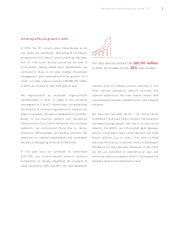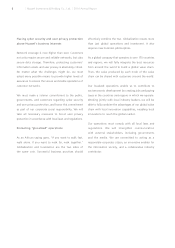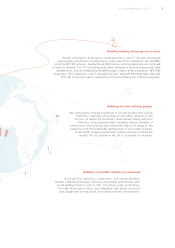Huawei 2014 Annual Report Download - page 7
Download and view the complete annual report
Please find page 7 of the 2014 Huawei annual report below. You can navigate through the pages in the report by either clicking on the pages listed below, or by using the keyword search tool below to find specific information within the annual report.5Message from the Rotating and Acting CEO
Changing our operational model from "issuing
orders" to "delegating authority"
We will delegate responsibility and authority to field
units to achieve the operational model where we can
respond to customer needs more flexibly and promptly,
while maintaining a forward-looking view.
Shifting from function-centered to project-
centered business management
Customer projects and product projects will constitute
our primary business operations in the future. Improving
project operations and management capabilities will be
the major way we boost efficiency and profitability over
the next few years.
In 2015, we will continue to promote project-centered
operations, and begin piloting pre-sales and post-sales
alignment at the project level. Our goal is to change
from a weak, "function first, project second" matrix
structure to a strong, "project first, function second"
matrix structure.
By building up organizations such as tiger teams, the
Special Project Dept, and the Project Mgmt Resource
Pool, we will promote experience sharing and enhance
organization, talent, technology, and management
capabilities. These initiatives will help ensure that field
offices will be given both responsibility and authority,
and that back offices will provide enablement and
oversight.
Continuing process transformations to increase
operational efficiency
To become the leader of the ICT industry, we should
not only maintain technological leadership, but also
learn from other companies and integrate their best
practices with our existing advantages. This will help
us develop powerful organizational capabilities and a
strong management system.
Therefore, we must focus on the two major business
streams, market-oriented innovation and customer
engagement, and strive to integrate transformation
projects across different functions, processes, and
departments at representative offices. These projects
include LTC; ISD; country planning, coordinating, and
scheduling; and CIAG.
We will extend our integrated transformation pilot
project to other selected countries. The target of our
management transformation is to achieve "complete
integration within two years" in the ICT infrastructure
network business, and to lay the foundation for
achieving CIAG within three years and the "Five Ones"
within five years.




















